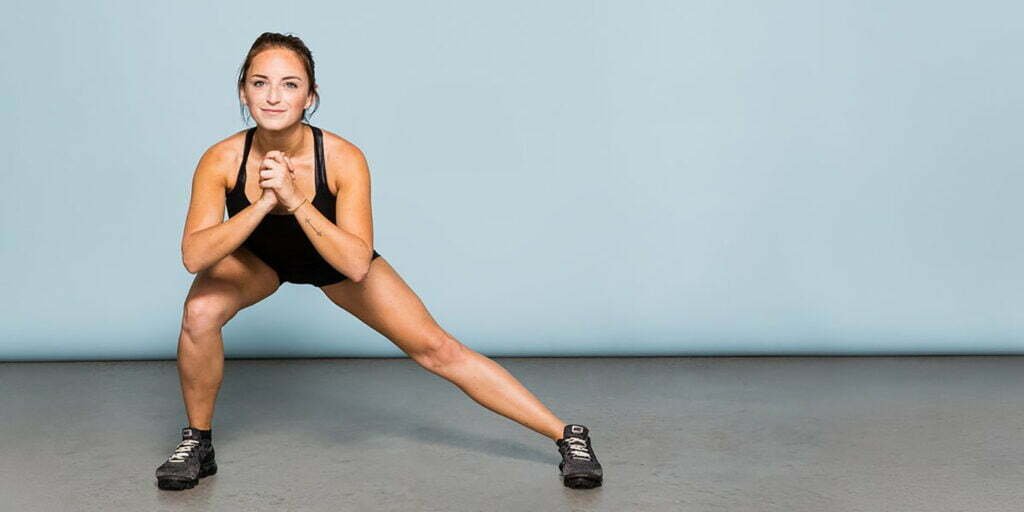Master the Art of Squats: Unleash Your Inner Strength and Transform Your Body
Table of Contents
Introduction
When it comes to sculpting a strong and powerful physique, few exercises are as effective as squats. Squats are a compound movement that engages multiple muscle groups, making them a staple in any comprehensive fitness routine. In this article, we will delve into the art of squats, exploring the various benefits they offer and providing you with a guide to mastering this foundational exercise. Whether you are a seasoned fitness enthusiast or just starting your fitness journey, learning how to perform squats correctly can unleash your inner strength and transform your body.
The Benefits of Squats
1. Building Leg Strength and Muscle
Squats primarily target the muscles of the lower body, including the quadriceps, hamstrings, and glutes. By consistently incorporating squats into your workout routine, you can develop exceptional leg strength and muscle mass. Strong legs not only enhance your overall athletic performance but also contribute to better balance, stability, and posture.
2. Full-Body Workout
Contrary to popular belief, squats are not just a leg exercise. When performed with proper form, squats engage your core, back, and upper body muscles as well. This compound movement activates a large number of muscles simultaneously, providing you with a comprehensive full-body workout. By incorporating squats into your routine, you can save time while reaping the benefits of a well-rounded exercise.
3. Functional Strength and Mobility
In addition to building muscle and strength, squats improve your functional fitness. Functional fitness refers to the ability to perform everyday activities with ease and efficiency. Squats mimic movements such as sitting down and standing up, making them highly functional exercises. Regularly practicing squats can enhance your mobility, flexibility, and overall functional strength, making daily activities more manageable and reducing the risk of injuries.
Mastering the Squat Technique
To reap the full benefits of squats and minimize the risk of injury, it is crucial to master the proper squat technique. Follow these steps to perform a squat with correct form:
1. Starting Position
Stand with your feet shoulder-width apart, toes slightly pointing outwards. Keep your chest lifted, shoulders back, and core engaged. Maintain a neutral spine throughout the movement.
2. Descending Phase
Initiate the movement by hinging at your hips and bending your knees. Lower your body as if you are sitting back into an imaginary chair. Keep your weight on your heels and maintain balance throughout the descent. Aim to lower until your thighs are parallel to the floor, or as close to parallel as your mobility allows.
3. Ascending Phase
Press through your heels and engage your leg muscles to rise back up to the starting position. Maintain control and avoid locking your knees at the top. Exhale as you straighten your legs and return to the standing position.

4. Common Mistakes to Avoid
- Knees Caving In: Ensure that your knees track in line with your toes throughout the movement. Avoid allowing them to cave inward, as this can put unnecessary stress on your joints.
- Forward Leaning: Maintain an upright posture throughout the squat. Avoid excessive forward leaning, as this can strain your lower back.
- Partial Range of Motion: Strive to perform squats through a full range of motion, aiming to lower until your thighs are parallel to the floor. Avoid shallow squats that do not engage the muscles fully.
- Rapid Descents: Control the speed of your descent to maintain proper form and prevent injuries. Avoid dropping quickly into the squat position.
Tips for Progression and Variation
Once you have mastered the basic squat technique, you can incorporate these tips to progress and add variety to your squat workouts:
1. Increase Resistance
To continue challenging your muscles and promoting growth, gradually increase the resistance used during squats. This can be achieved through various methods, such as using dumbbells, barbells, or resistance bands. Experiment with different weights and equipment to find the resistance level that suits your fitness level and goals.
2. Try Different Squat Variations
Squats offer a wide range of variations that target different muscle groups and add excitement to your workouts. Some popular squat variations include:
- Sumo Squats: Wider stance with toes pointed outward, targeting the inner thighs.
- Front Squats: Barbell positioned across the front of your shoulders, emphasizing the quads.
- Pistol Squats: Single-leg squats that challenge balance and core stability.
- Jump Squats: Explosive squat jumps that improve power and cardiovascular fitness.
Incorporating these variations into your routine can provide new stimuli for your muscles and prevent plateauing.
3. Incorporate Plyometric Exercises
Plyometric exercises involve explosive movements that utilize the stretch-shortening cycle of the muscles. Adding plyometric exercises, such as squat jumps or box jumps, to your routine can enhance power, agility, and overall athletic performance.
FAQ
Q 1: Are squats suitable for beginners?
A : Yes, squats can be modified to suit different fitness levels. Beginners can start with bodyweight squats and gradually progress to using weights.
Q 2: How often should I incorporate squats into my workout routine?
A: It is recommended to perform squats 2-3 times per week with a day of rest in between to allow for proper muscle recovery.
Q 3: Can squats help with weight loss?
A: Yes, squats are a compound movement that engages multiple muscles, which can contribute to burning calories and promoting weight loss when combined with a balanced diet.
Q 4: Should I consult a fitness professional before incorporating squats into my routine?
A: If you are new to exercise or have any underlying health conditions, it is advisable to consult a fitness professional to ensure proper form and technique.
Q 5: Can squats help improve sports performance?
A: Yes, squats can enhance athletic performance by increasing leg strength, power, and explosiveness, which are beneficial for various sports activities.
Conclusion
Squats are a powerful exercise that can unlock your inner strength and transform your body. By incorporating squats into your fitness routine and mastering the proper technique, you can build strong, defined legs, improve overall functional fitness, and enjoy the benefits of a full-body workout. Remember to start with the basics, focus on proper form, and gradually progress to more challenging variations. With dedication and consistency, you can master the art of squats and achieve remarkable results.




